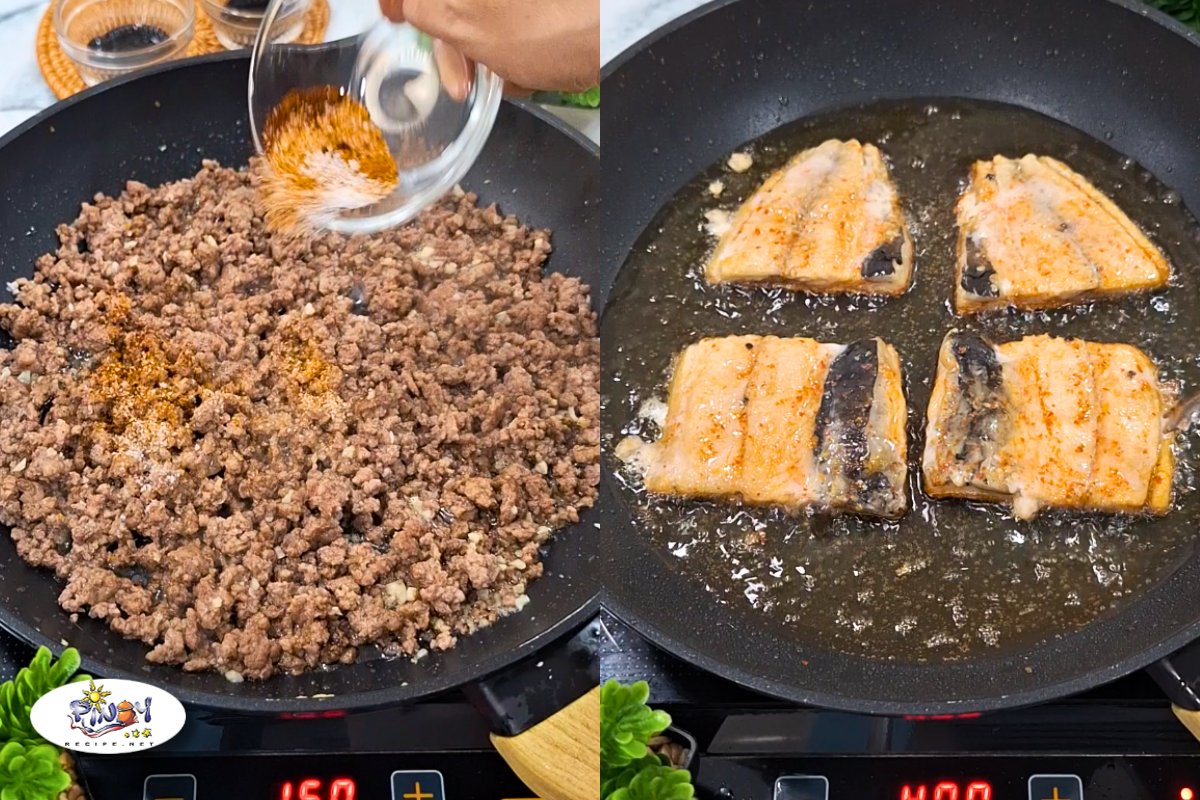Last Updated on October 2, 2025 by Ed Joven
It’s 5 PM on a Tuesday, and you’re staring at your empty kitchen counter wondering what to make for dinner. Sound familiar? If you’re tired of cycling through the same boring meals or relying on expensive takeout, it’s time to discover why Asian recipes might be the solution you’ve been looking for.
Western dinner planning often feels like a juggling act. You need a main dish, side dishes, vegetables, and somehow it all needs to come together at the same time. Asian cuisines take a completely different approach. Most Asian meals are designed as complete, balanced dishes that include protein, vegetables, and starch all in one bowl or plate.

The best part? Filipino recipes are the perfect starting point for anyone new to Asian cooking. They use familiar cooking techniques with bold, approachable flavors that can transform your weeknight dinner routine.
The Asian Advantage: Why These Cuisines Solve Dinner Problems
Asian cooking naturally solves many of the problems that make weeknight dinners stressful. Instead of preparing multiple separate dishes, you’re making one complete meal. A simple Chicken Adobo gives you tender protein in a flavorful sauce served over rice. A vegetable stir-fry combines your protein, vegetables, and seasonings in one pan.
These meals are also incredibly flexible. Running low on broccoli? Throw in whatever vegetables you have in your fridge. No chicken? Use pork, beef, or even tofu. The techniques and flavor profiles adapt easily to whatever ingredients you have on hand, making them excellent easy dinner ideas for busy families.

Most Asian dishes actually taste better the next day, which means leftovers become something to look forward to rather than something to endure. The flavors have time to meld together, and many dishes reheat beautifully.
The Filipino Foundation: Your Gateway Recipes
Start your Asian cooking journey with three essential Filipino dishes that will build your confidence and teach you fundamental techniques.
Adobo is probably the most forgiving recipe you’ll ever make. You literally cannot mess it up. Throw chicken or pork in a pot with soy sauce, vinegar, garlic, and bay leaves, then let it simmer. The long cooking time means you can start dinner and then help kids with homework or catch up on other tasks. The meat becomes incredibly tender, and the sauce is perfect over rice.
Fried rice transforms yesterday’s leftover rice into tonight’s dinner. Heat some oil in a large pan, scramble a few eggs, add your day-old rice and whatever vegetables or leftover meat you have around. Season with soy sauce and garlic, and you’ve got a complete meal in less than 15 minutes.
Pancit Canton, or Filipino stir-fried noodles, teaches you the basic stir-fry technique that applies to countless other Asian dishes. You’ll learn how to cook ingredients in the right order, how to build flavors in layers, and how to bring everything together with a simple sauce.
The Asian Pantry: Your Weeknight Dinner Insurance Policy
The secret to quick Asian cooking is having the right ingredients on hand. You don’t need dozens of exotic items. Five basic ingredients can create countless different meals.
Soy sauce is your flavor foundation. It adds saltiness and umami depth to everything from stir-fries to marinades. Rice vinegar brings brightness and balance. Fresh garlic and ginger are your aromatic base for most dishes. Sesame oil adds a rich, nutty finish that makes everything taste more complex than it actually is.
These ingredients have incredibly long shelf lives, so your initial grocery investment will pay off for months. Even better, you can find all of these items at regular grocery stores. No special trips to specialty markets required.
Fish sauce might sound intimidating, but it’s just concentrated umami flavor. A small amount adds incredible depth to dishes without making them taste fishy. Oyster sauce gives stir-fries a glossy, restaurant-quality appearance. Chili garlic sauce lets you control heat levels in your cooking.
From Filipino to the Rest of Asia: Expanding Your Repertoire
Once you’ve mastered basic Filipino techniques, expanding into other Asian cuisines becomes surprisingly easy. The braising method you learned making adobo works for Korean bulgogi with different seasonings. The stir-fry technique from pancit applies to Thai pad see ew or Chinese lo mein.
The beauty of Asian cooking is that the same basic formulas work across different cuisines. High heat plus quick cooking plus flavorful sauce equals dinner. Rice plus protein plus vegetables plus sauce equals a complete meal. Clear broth plus noodles plus toppings equals comfort food.
Weekly Meal Planning the Asian Way
Try the three-recipe rotation strategy. Pick one Filipino dish you feel confident making and prepare it on Mondays. On Wednesdays, take the same basic technique but try it with different Asian flavors. Fridays become your experimentation day for trying something completely new.
This approach builds your skills gradually while ensuring you always have reliable dinner options. Cook extra rice on the weekends so you’re ready for quick fried rice meals during the week. Marinate proteins in advance so they’re ready to cook when you get home.
The Time-Saving Reality
Most Asian dinners take 30 minutes or less from start to finish. Compare that to traditional Western meals that might require an hour of prep and cooking time. The techniques are straightforward, and once you learn the basic patterns, you can create dozens of different meals using the same skills.
Asian recipes have transformed countless busy kitchens from sources of stress into places of creativity and satisfaction. Start with one simple Filipino recipe, stock your pantry with a few key ingredients, and discover how easy weeknight dinners can actually be.






Leave a Reply